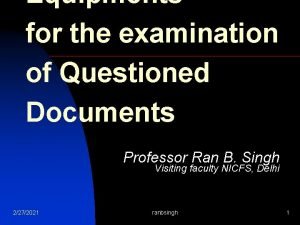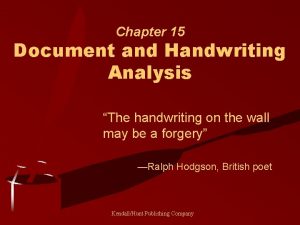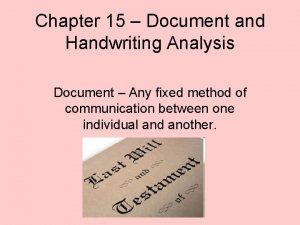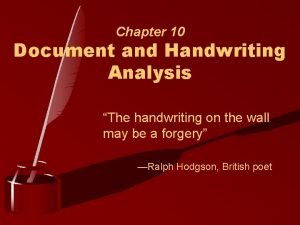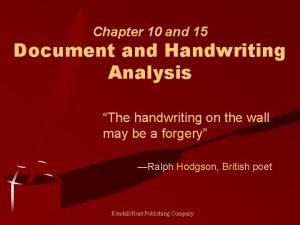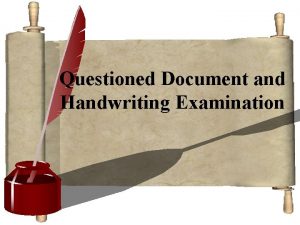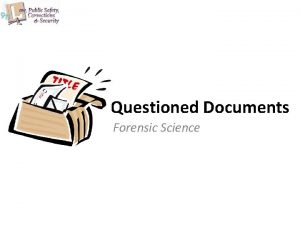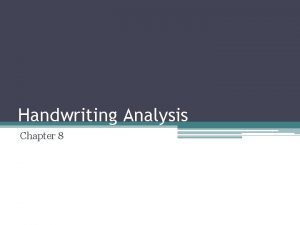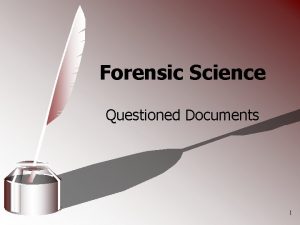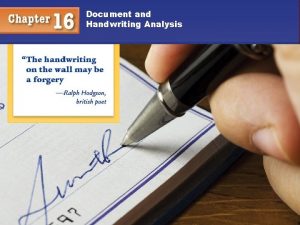Handwriting and Document Analysis Questioned document any with






- Slides: 6

Handwriting and Document Analysis • Questioned document: any with handwritten markings whose source or authenticity is in question. – Letters, checks, medical documents, contracts, etc. • Individual evidence: no two persons have the same handwriting. – Handwritting and printing habits are unique – Characteristics used to identify who wrote a word, signature or document. – Can be identified by proper expert in court

Identification • Need several known and unquestioned standards • Compare known to questioned samples – For consistency – Habitual characteristics which match

• Blind forgery Types – Done without a model signature to aid forger – Examples: petition fraud, anonymous harassing mail, etc. • Genuine signature as a model – Simulate movements of victim by carefully drawing signature – Use of microscope to identify characteristics which victim does not make and are characteristic of the forger • Tracing – Tracing genuine signature using light box, window, or other device. – Stereomicroscope discloses this forgery

Ink Chromatography • Separates specific colors used to make inks • Each brand uses different colors in the making of their ink. • Works for two reasons – Inks will dissolve in a solvent (in this case water) – They will travel up the filter paper with the distance traveled dependent on the size of the molecule – Since paper is porous, the smaller molecules will move faster and farther than the larger molecules.

Filter paper with ink spots in solvent Finished product with separated colors

Procedure issues • Make sure the drop of ink does not go into the solvent. It should be just above the solvent. • Watch the movement of the water. The reaction will end when the water gets close to the top. • Use a pencil and mark the line where the solvent stopped. • Mark a line at the base of each color. • Rf = distance traveled by color spot distance traveled by solvent
